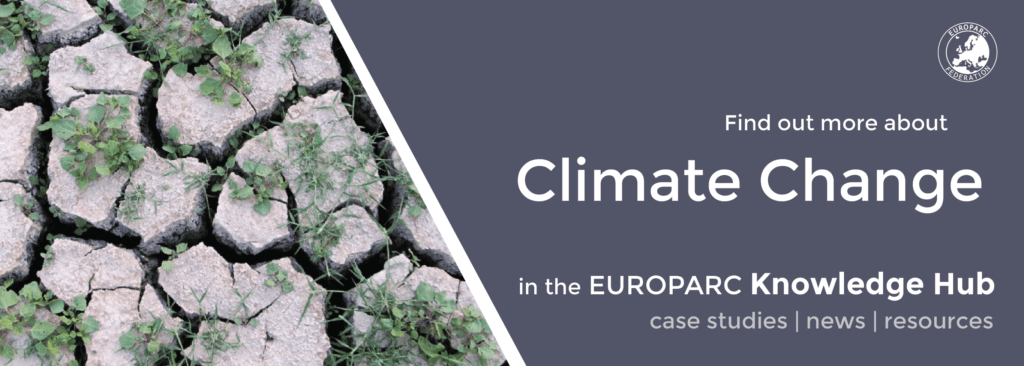The EUROPARC Task Force is working to promote adaptation in Protected Areas
In the framework of LIFE Natur’Adapt, the EUROPARC Task Force on Climate Change works to provide advice and promote adaptation to climate change within the European network of Protected Areas. After nearly two years of online work, its members met for the first time in the flesh for a two-day working session in Brussels.
Developing tools for managers
This meeting allowed the authors of the methodologies LIFE Natur’Adapt and EUROPARC-Spain Manual 13 (links below) to exchange views on their respective approaches regarding climate change adaptation in Protected Areas. The approaches are well aligned and there is an obvious interest in developing a common tool that could be used by all Protected Areas in Europe and thus avoid each member state redoing work that has already been done elsewhere.
The Task Force experts have also been actively developing the foundation of an argumentation on the role of Protected Natural Areas in local climate change adaptation plans. Additionally, they worked on the design of a toolkit to facilitate the integration of climate change into management practices for Protected Areas. The results of this work are scheduled to be published after the summer of 2022.
Working with the European Commission
In parallel, an informal, open and constructive exchange took place with experts from the European Commission. The meeting allowed Task Force members to share perspectives from the field. A case study from the Netherlands, presented by Myrthe Fonck (PWN), showed that natural solutions such as dynamic dune management can bring co-benefits for nature conservation and climate change adaptation. This was followed by a presentation from Ainhize Butron, who works for Ihobe, the Basque Country’s environmental agency. She presented the regional perspective on how EU texts (directives, laws, strategies, …) concretely influence laws at national and regional level in Spain. She demonstrated that by highlighting the role of forests in the European Strategy for Climate Change Adaptation, the restoration of this particular ecosystem has attracted the attention of local politicians to the detriment of other habitats such as wetlands, grasslands or rivers…
Ihobe’s work highlighted that it is important to implement climate change adaptation within the N2000 network itself, but also in surrounding areas. Improving the quality of nature outside Protected Areas will help mitigate the negative effects of climate change. In parallel, examples such as energy transition strategies, show that their impacts on land use and biodiversity can be detrimental. That is why it is essential to integrate nature as a stakeholder in the design of adaptation and mitigation plans.
The open discussion that followed was very rich and will contribute to shaping the revised guidelines for climate change adaptation in Natura 2000 areas.
Exchanging and learning together
A study visit was organised to the beautiful Forêt de Soignes, which is a periurban Natura 2000 site and includes UNESCO World Heritage sites. The head of forest management, Frederik Vaes, Bruxelles Environnement, showed his European colleagues how the management of the beech forest is adapted to increase the functional resilience of the ecosystem in the future. A case study will follow in 2022.
The meeting provided the Task Force with many new inputs and was an important addition to the work already done online.
More information
- About the EUROPARC Task Force on Climate Change and Protected Areas
- Protected areas and European climate change policies, towards a white paper. Discussion published by the EUROPARC Task Force on Climate Change and Protected Areas
- Methodology for climate change adaptation in PA – Manual 13 by EUROPARC-Spain
- European Commission: “Guidelines on Climate Change and Natura 2000” – 2014 – (DE, EN, FR)
- Other resources published by the Task Force (articles, webinar, ….)
Photo Credit: Frédéric Demeuse
